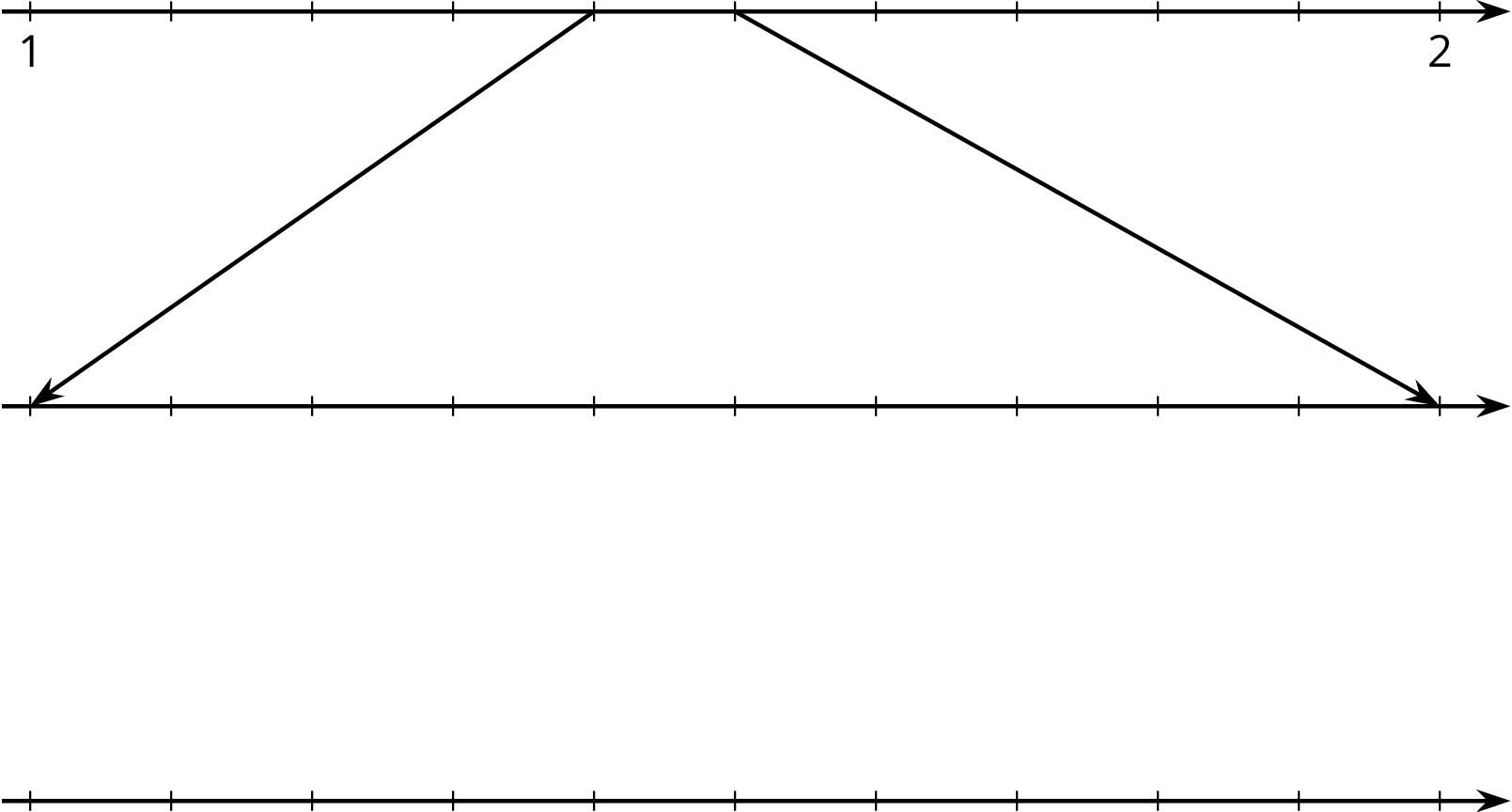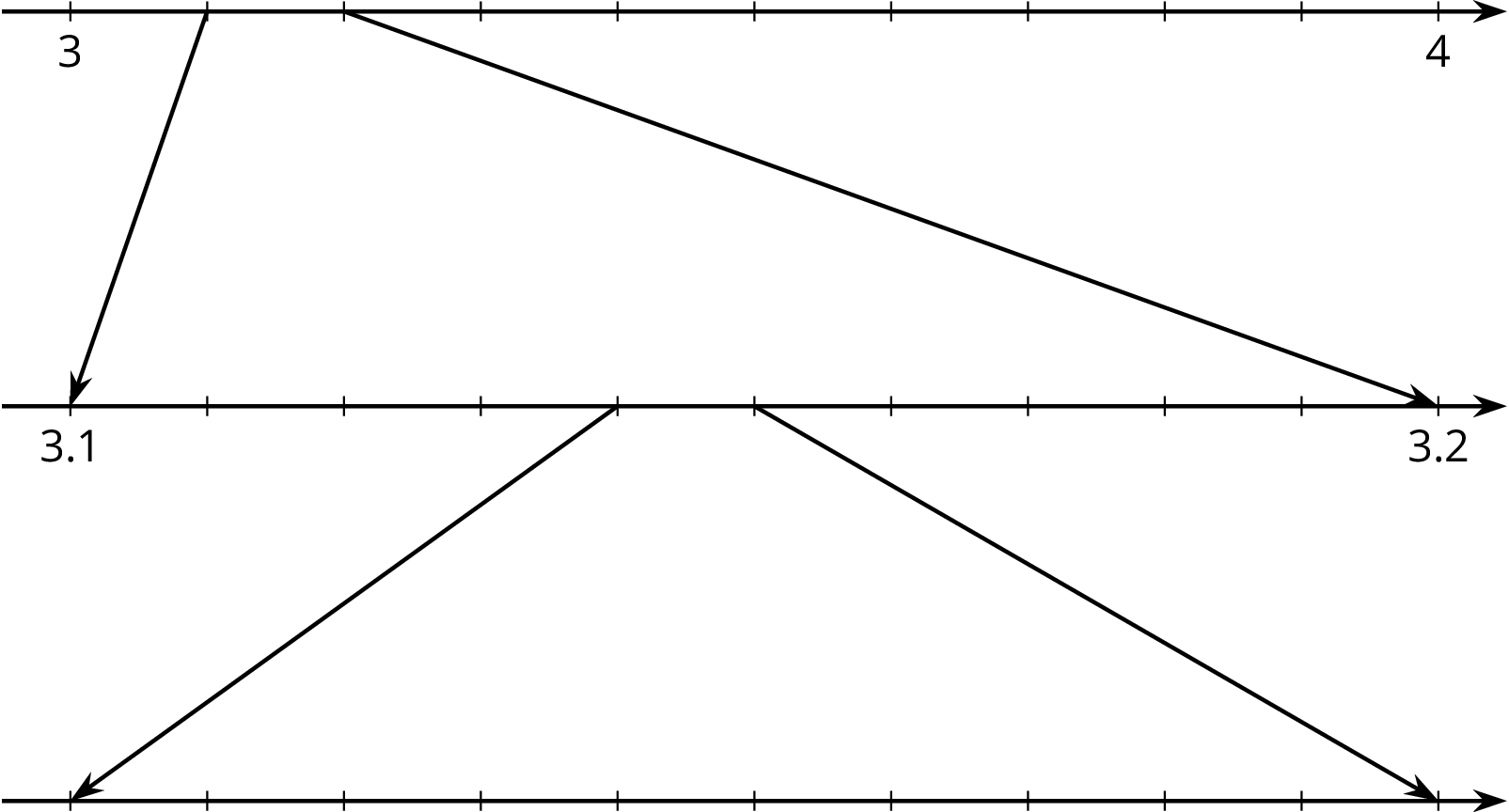Lesson 12
Infinite Decimal Expansions
Let’s think about infinite decimals.
12.1: Searching for Digits
The first 3 digits after the decimal for the decimal expansion of \(\frac37\) have been calculated. Find the next 4 digits.

12.2: Some Numbers Are Rational
Your teacher will give your group a set of cards. Each card will have a calculations side and an explanation side.
-
The cards show Noah’s work calculating the fraction representation of \(0.4\overline{85}\). Arrange these in order to see how he figured out that \(0.4\overline{85} = \frac{481}{990}\) without needing a calculator.
-
Use Noah’s method to calculate the fraction representation of:
- \(0.1\overline{86}\)
- \(0.7\overline{88}\)
Use this technique to find fractional representations for \(0.\overline{3}\) and \(0.\overline{9}\).
12.3: Some Numbers Are Not Rational
-
- Why is \(\sqrt{2}\) between 1 and 2 on the number line?
- Why is \(\sqrt{2}\) between 1.4 and 1.5 on the number line?
- How can you figure out an approximation for \(\sqrt{2}\) accurate to 3 decimal places?
-
Label all of the tick marks. Plot \(\sqrt{2}\) on all three number lines. Make sure to add arrows from the second to the third number lines.

-
- Elena notices a beaker in science class says it has a diameter of 9 cm and measures its circumference to be 28.3 cm. What value do you get for \(\pi\) using these values and the equation for circumference, \(C=2\pi r\)?
- Diego learned that one of the space shuttle fuel tanks had a diameter of 840 cm and a circumference of 2,639 cm. What value do you get for \(\pi\) using these values and the equation for circumference, \(C=2\pi r\)?
-
Label all of the tick marks on the number lines. Use a calculator to get a very accurate approximation of \(\pi\) and plot that number on all three number lines.

- How can you explain the differences between these calculations of \(\pi\)?
Summary
Not every number is rational. Earlier we tried to find a fraction whose square is equal to 2. That turns out to be impossible, although we can get pretty close (try squaring \(\frac75\)). Since there is no fraction equal to \(\sqrt{2}\) it is not a rational number, which is why we call it an irrational number. Another well-known irrational number is \(\pi\).
Any number, rational or irrational, has a decimal expansion. Sometimes it goes on forever. For example, the rational number \(\frac{2}{11}\) has the decimal expansion \(0.181818 . . . \) with the 18s repeating forever. Every rational number has a decimal expansion that either stops at some point or ends up in a repeating pattern like \(\frac2{11}\). Irrational numbers also have infinite decimal expansions, but they don't end up in a repeating pattern. From the decimal point of view we can see that rational numbers are pretty special. Most numbers are irrational, even though the numbers we use on a daily basis are more frequently rational.
Glossary Entries
- cube root
The cube root of a number \(n\) is the number whose cube is \(n\). It is also the edge length of a cube with a volume of \(n\). We write the cube root of \(n\) as \(\sqrt[3]{n}\).
For example, the cube root of 64, written as \(\sqrt[3]{64}\), is 4 because \(4^3\) is 64. \(\sqrt[3]{64}\) is also the edge length of a cube that has a volume of 64.
- repeating decimal
A repeating decimal has digits that keep going in the same pattern over and over. The repeating digits are marked with a line above them.
For example, the decimal representation for \(\frac13\) is \(0.\overline{3}\), which means 0.3333333 . . . The decimal representation for \(\frac{25}{22}\) is \(1.1\overline{36}\) which means 1.136363636 . . .